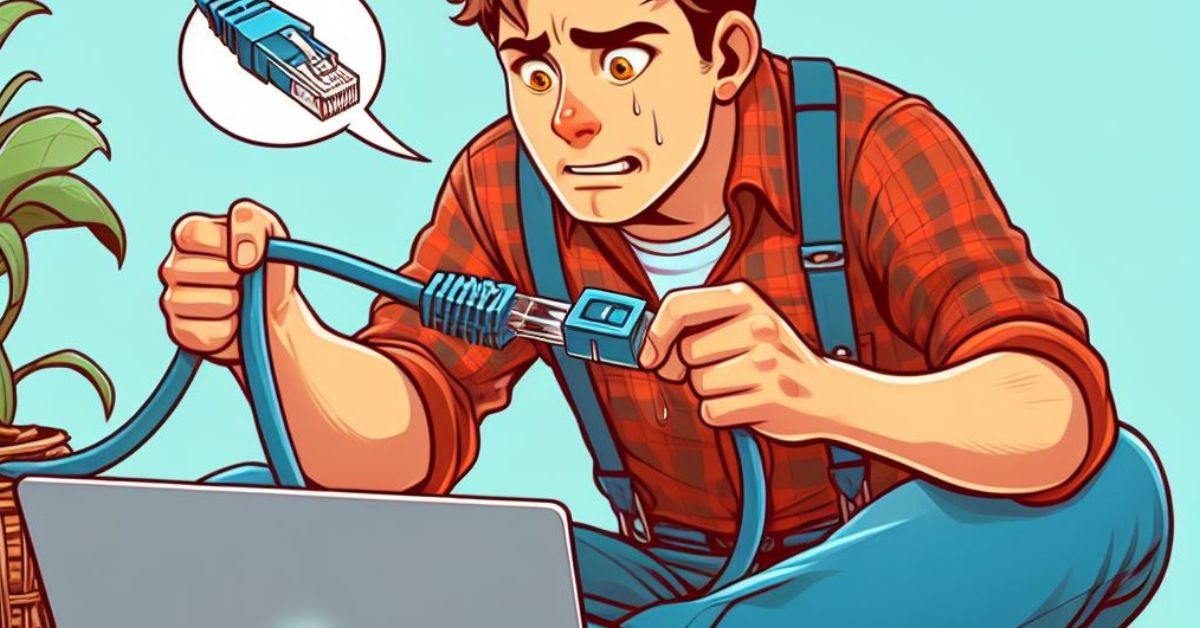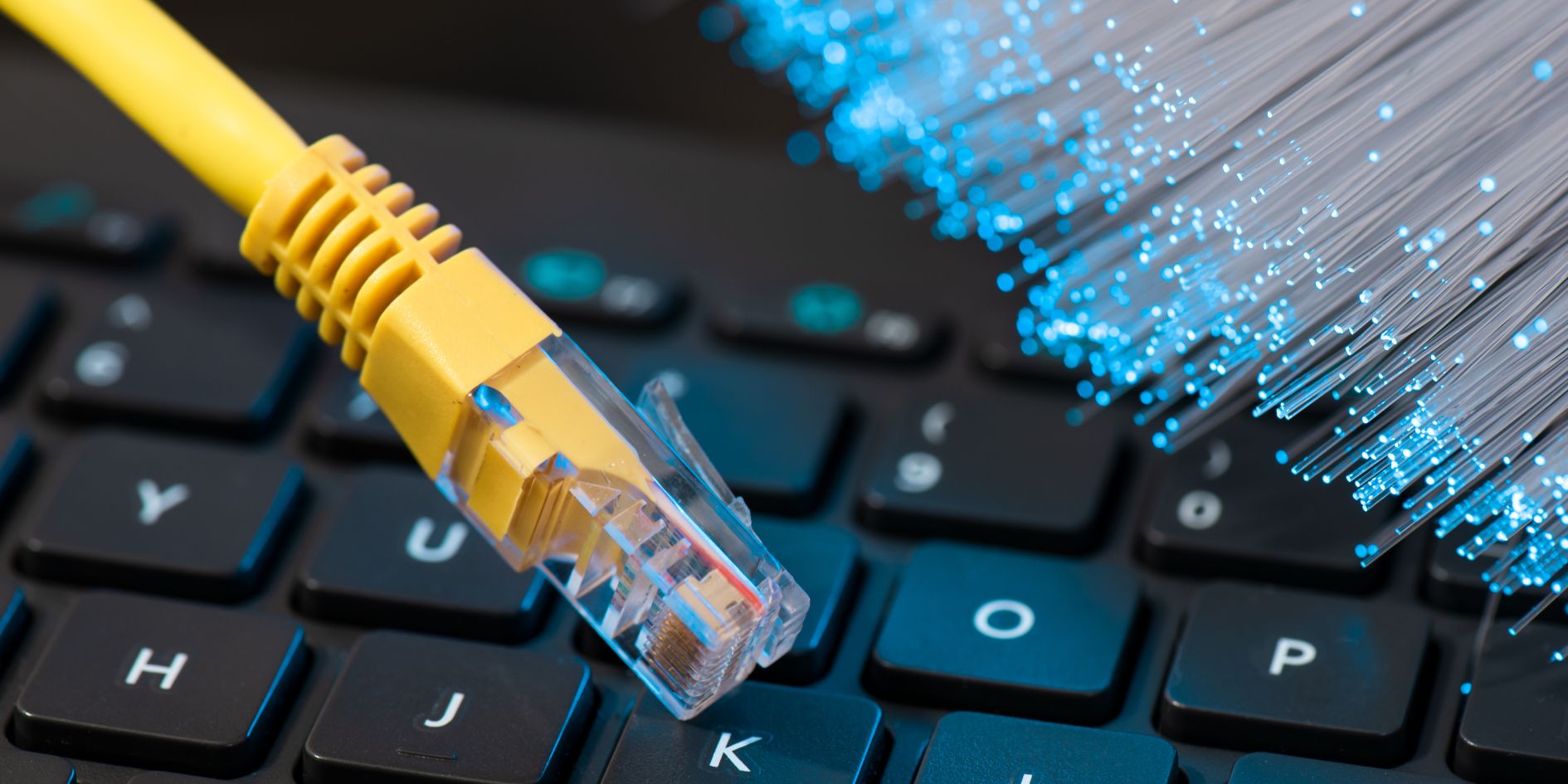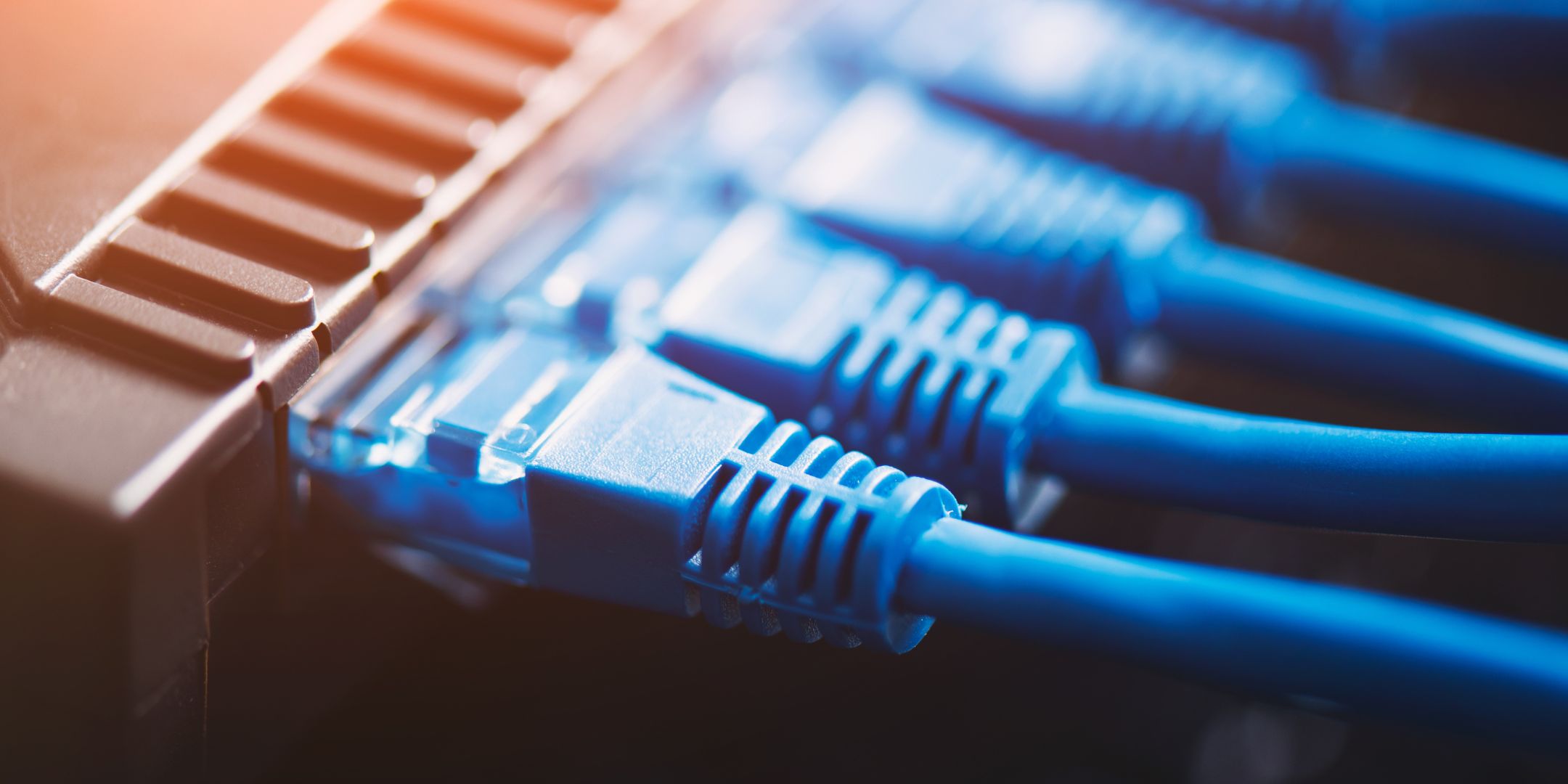Ethernet cables are commonly used to connect devices such as computers, routers, and modems to a network. They provide fast and reliable data transfer speeds, but they can also get stuck in the ports of your laptop. This can happen due to various reasons, such as a faulty cable, a damaged port, or a misaligned connector. If you encounter this problem, do not panic or force the cable out, as this can damage your laptop or the cable. Instead, follow these steps to safely remove an Ethernet cable stuck in laptop.
Why Cables Get Stuck?
One of the most frustrating problems that laptop users face is when their ethernet cable gets stuck in the port and they can’t remove it. This can happen for various reasons, such as a faulty or damaged cable, a misaligned or bent connector, or a dirty or corroded port. In this article, we will explain some of the possible causes of this issue and how to fix it safely and naturally.
Faulty or Damaged Cable
Sometimes, the cable itself is the culprit. If the cable is old, worn out, or has been exposed to extreme temperatures, moisture, or physical stress, it may develop cracks or breaks that prevent it from releasing smoothly from the port. The cable may also have a defective locking mechanism that does not disengage when you press the release tab. To avoid this problem, you should always use high-quality cables that are compatible with your laptop model and replace them regularly if they show signs of wear and tear.
Expand Your Knowledge: Understanding Cable Connector: A Comprehensive Guide
Misaligned or Bent Connector
Another common cause of a stuck cable is a misaligned or bent connector. This can happen if you insert or remove the cable at an angle, apply too much force, or twist or pull the cable while it is connected. The connector may also get damaged if you drop your laptop or hit it against something. A misaligned or bent connector can make it difficult to press the release tab or cause the tab to get stuck inside the port. To prevent this problem, you should always insert and remove the cable straight and gently, and avoid moving your laptop while the cable is connected.
Dirty or Corroded Port
A third possible cause of a stuck cable is a dirty or corroded port. Over time, dust, dirt, lint, and other debris can accumulate inside the port and interfere with the connection. The port may also get corroded if it is exposed to moisture, humidity, or chemicals. A dirty or corroded port can make the cable fit too tightly or loosely, or cause the release tab to malfunction. To solve this problem, you should regularly clean the port with a soft cloth, a cotton swab, or compressed air, and avoid spilling liquids or using harsh cleaners on your laptop.
How do you fix a stuck Ethernet cable on a laptop?
Before you attempt to remove an ethernet cable that is stuck in your laptop, you need to gather some tools and materials that will help you with the process. Here is a list of what you will need:
- A pair of needle-nose pliers or tweezers
- A small flat-head screwdriver or a thin metal object
- A flashlight or a magnifying glass
- A soft cloth or a paper towel
- A can of compressed air or a vacuum cleaner
Learn More Here: Transforming Your Network with Ethernet Cable Extender: Bridge the Gap
You also need to prepare your workspace and ensure your safety. Follow these steps:
- Turn off your laptop and unplug it from the power source
- Remove the battery if possible
- Place your laptop on a flat, stable and clean surface
- Wear gloves and eye protection to avoid injury from sharp edges or debris
- Avoid touching any metal parts or components inside the laptop
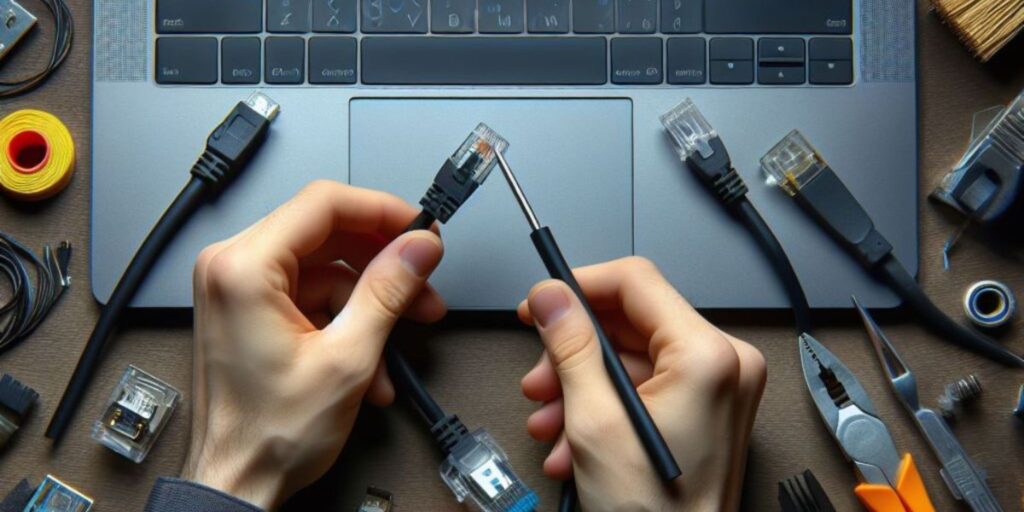
Gentle Extraction Techniques
The first thing to do is to try some gentle methods to attempt freeing the cable without causing damage. These include:
- Wiggling the cable gently from side to side and up and down. This can help loosen the latch or the pin and release the cable.
- Twisting the cable slightly clockwise and counterclockwise. This can also help dislodge the cable from the port.
- Using lubricants such as WD-40, silicone spray, or cooking oil. These can reduce the friction between the cable and the port and make it easier to pull out. However, be careful not to use too much lubricant or spill it on other parts of the laptop.
Utilizing DIY Solutions
If the gentle techniques do not work, you can try some DIY remedies and household items that can aid in removal. These include:
- Using dental floss, fishing line, or thin wire. These can be inserted between the cable and the port and used to pry or pull the cable out. Be careful not to damage the port or the cable with these items.
- Using tape, glue, or rubber bands. These can be attached to the end of the cable and used to create more grip or leverage when pulling the cable out. However, make sure that these items do not leave any residue or stickiness on the cable or the port.
- Using heat, such as a hair dryer, a heat gun, or a soldering iron. These can help soften or melt the plastic latch or pin and make it easier to remove the cable. However, be very careful not to overheat or burn the laptop or the cable with these devices.
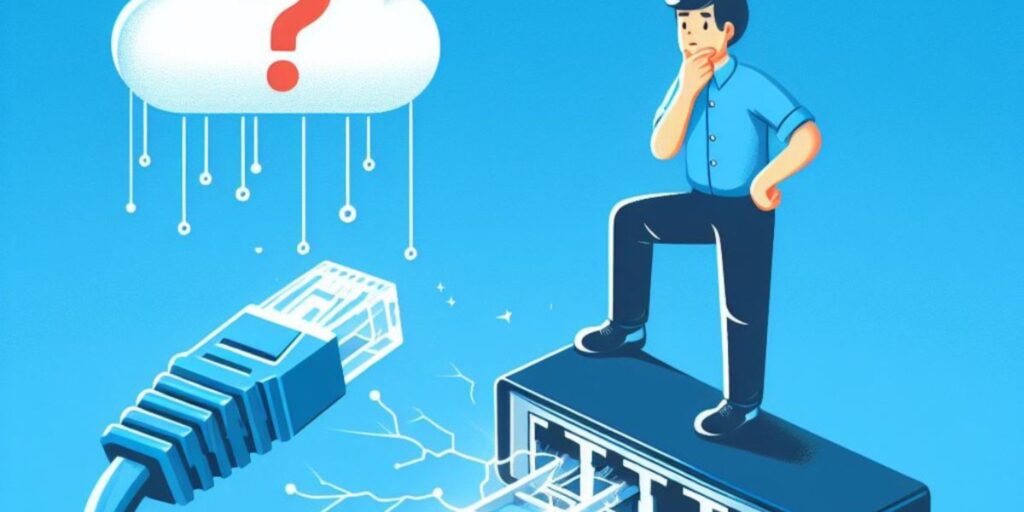
Implementing Advanced Techniques
If none of the above solutions work, you may need to resort to more advanced techniques for stubborn cases. These include:
- Disassembling the laptop and accessing the port from inside. This can allow you to push or pry the cable out from behind. However, this requires some technical skills and tools and may void your warranty or damage your laptop if done incorrectly.
- Utilizing specialized tools such as pliers, tweezers, or needle-nose pliers. These can help grab and pull the cable out with more force and precision. However, these tools can also damage the port or the cable if used too roughly or carelessly.
These are some of the steps you can take to remove an ethernet cable stuck in a laptop. Remember to always be gentle, patient, and cautious when trying these methods and seek professional help if necessary.
Find Out More: Why Ethernet Crossover Cables Matter in Network Setup In 2024
Best Practices And Precautions Of Ethernet Cable
- Turn off the laptop and unplug it from the power source before attempting any repairs or replacements.
- Use a soft cloth or a microfiber cloth to wipe away any dust or dirt from the laptop and cable surfaces.
- Use the appropriate tools and techniques for the removal process. Refer to the laptop manual or online guides for specific instructions.
- Do not force, twist, or pull the cable too hard. This may cause damage to the connectors, wires, or ports.
- If you encounter any resistance or difficulty, stop and check for any obstacles or errors. Do not proceed until you have resolved the issue or contacted a professional for assistance.
- Be patient and cautious throughout the process. Rushing or skipping steps may result in more damage or injury.
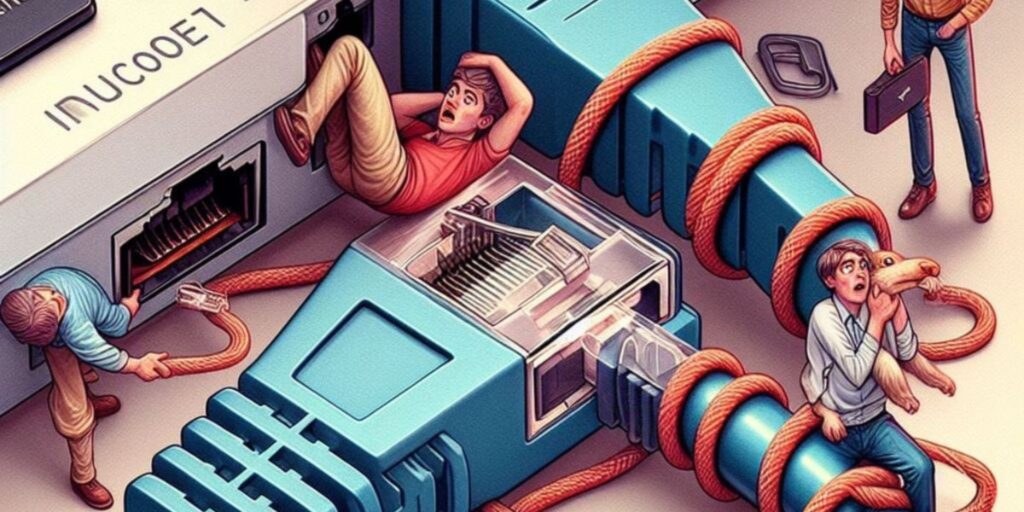
Following these tips will help you remove the laptop or cable safely and successfully.
Conclusion
To conclude, there are several methods to remove an Ethernet cable stuck in your laptop without causing any damage. You can try to wiggle the cable gently, press the release tab firmly, use a paper clip or a needle to push the latch, or apply some WD-40 spray to loosen the connection. If none of these work, you may need to contact a professional technician for assistance. Do not force the cable out or use excessive force, as this may damage your laptop or the Ethernet port. Remember to always insert and remove the Ethernet cable carefully and securely to avoid getting it stuck in the future. We hope this guide has helped you solve the problem of Ethernet cable stuck in laptop.
FAQS
How did my Ethernet cable stuck in laptop?
Ethernet cables can get stuck due to factors like rough handling, port damage, or misalignment during insertion.
Can I damage my laptop by trying to remove the stuck Ethernet cable?
Yes, attempting forceful removal can damage both the cable and the laptop port. It’s crucial to proceed carefully to avoid causing harm.
Are there any DIY methods to try before seeking professional help?
Yes, you can try gentle wiggling, twisting, or using lubricants to loosen the cable. However, be cautious and stop if you encounter resistance to prevent damage.
What if the Ethernet cable is still stuck after trying DIY methods?
If gentle techniques don’t work, consider seeking assistance from a professional technician who can safely remove the cable without causing further damage.
How can I prevent my Ethernet cable from getting stuck in the future?
Handle your cables with care, avoid forcing connections, and regularly inspect ports for damage or debris to prevent recurrence of this issue.

